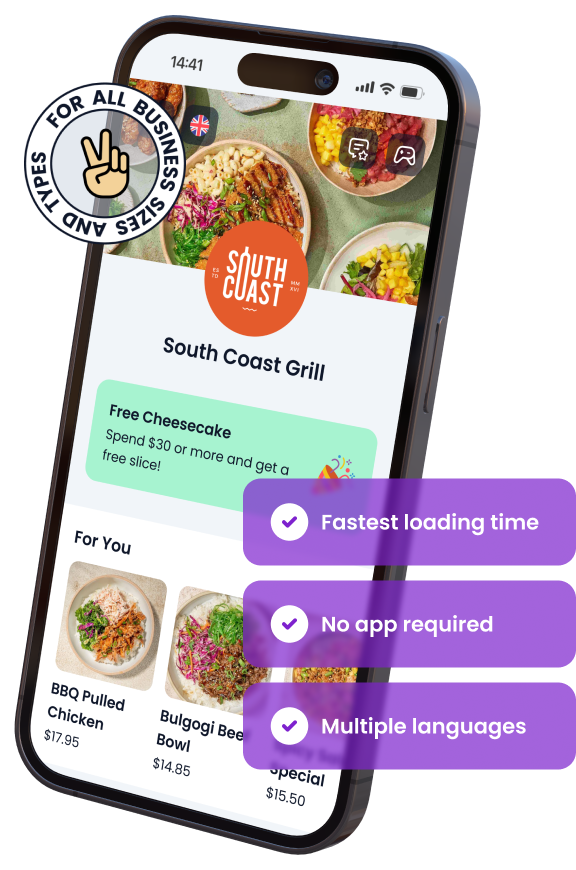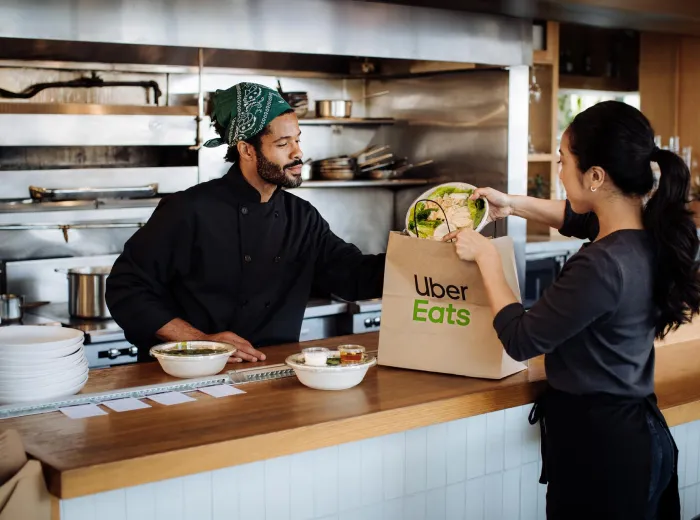

What is The Average Profit Margin for a Restaurant?
Running a successful restaurant is about more than just serving great food; it’s about understanding the numbers behind the business. One of the most critical figures that every restaurant owner should keep an eye on is the profit margin. This number determines how much of your revenue turns into actual profit after covering expenses. For many restaurant owners, achieving a healthy profit margin can be a constant challenge due to fluctuating costs and tight competition.
The average profit margin for restaurants varies based on multiple factors, such as the type of restaurant, location, and how efficiently the business is run. While it might seem straightforward, calculating and improving this margin requires a deep understanding of the restaurant’s operational and financial components. In this guide, we’ll dive into what the average profit margins look like for different types of restaurants, how to calculate them, and actionable strategies to increase them for long-term success.
Would you like to listen our deep-dive conversation about this article?
Understanding Profit Margins in Restaurants
To truly gauge the health of your restaurant, it’s essential to understand the different types of profit margins and why they matter. Profit margins reveal how efficiently your business is operating and how much of your revenue is turning into profit. In this section, we’ll break down the fundamentals of restaurant profit margins and explore their importance.
What is a Profit Margin?
A profit margin is the percentage of revenue that remains after all expenses are deducted. It’s a key metric to measure financial health.
Gross Profit Margin: The percentage of revenue left after subtracting the cost of goods sold (COGS). This focuses primarily on food and beverage costs.
- Formula:

- Example: If your restaurant earns $50,000 in sales and your COGS is $20,000, your gross profit margin would be 60%.
Operating Profit Margin: Takes into account all operating costs, including labor, rent, utilities, and marketing.
- Formula:

- Example: After all operating expenses, if you have $10,000 left from $50,000 in revenue, your operating profit margin would be 20%.
Net Profit Margin: The final profit after all expenses, taxes, and interest are deducted. This is the “bottom line.”
- Formula:

- Example: If your net profit is $5,000 from $50,000 in revenue, your net profit margin would be 10%.
Why Profit Margins Matter for Restaurants
Profit margins aren’t just numbers on a balance sheet; they are critical to long-term survival and growth in the restaurant business.
- Indicator of Financial Health: Profit margins show whether your restaurant is thriving or struggling.
- Helps in Pricing Strategy: Knowing your margins helps you price your menu items to cover costs and still leave room for profit.
- Investor and Lender Confidence: Strong profit margins attract potential investors and make it easier to secure loans.
- Benchmarking and Industry Comparison: Profit margins allow you to compare your restaurant’s performance with industry averages to see if you are competitive.
Summary Table: Types of Profit Margins
| Type of Margin | What It Measures | Formula |
|---|---|---|
| Gross Profit Margin | Profit after food and beverage costs | (Revenue – COGS) ÷ Revenue × 100 |
| Operating Profit Margin | Profit after operating expenses | Operating Income ÷ Revenue × 100 |
| Net Profit Margin | Final profit after all costs and taxes | Net Profit ÷ Revenue × 100 |
Understanding these different types of profit margins is the first step in evaluating the financial success of your restaurant. With this knowledge, you can make informed decisions on pricing, operations, and overall strategy.
Average Profit Margins Across Different Restaurant Types
The profit margin for a restaurant can vary significantly based on the type of establishment, service model, and customer expectations. Quick-service, casual dining, fine dining, and cafes all have different cost structures and challenges, which impact their profit margins. In this section, we’ll explore the average profit margins for each type and discuss the factors that influence them.
Quick-Service Restaurants (QSRs)
Quick-service restaurants, often referred to as fast food outlets, tend to have higher profit margins compared to other restaurant types due to their streamlined operations and lower overhead costs.
- Average Profit Margin: Typically ranges from 6% to 9%.
- Cost Structure:
- Lower labor costs due to minimal service requirements.
- High sales volume and turnover allow for better cost management.
- Standardized menu items reduce food waste and allow bulk purchasing.
- Key Challenges:
- Competition with other fast-food chains, often leading to price wars.
- Maintaining consistent quality and speed in service.
Casual Dining Restaurants
Casual dining establishments, which offer table service and a moderately priced menu, face different cost structures compared to QSRs, often resulting in slightly lower profit margins.
- Average Profit Margin: Typically ranges from 4% to 7%.
- Cost Structure:
- Higher labor costs due to full-service staff (waiters, cooks, managers).
- Moderate food costs, but more complex menus can increase waste.
- Larger dining spaces often result in higher rent and utility costs.
- Key Challenges:
- Balancing quality service with pricing pressures.
- Controlling labor costs without sacrificing customer experience.
Fine Dining Restaurants
Fine dining restaurants are known for their high-quality food, premium ingredients, and top-notch service. However, these features come with high costs, which generally result in lower profit margins.
- Average Profit Margin: Typically ranges from 3% to 5%.
- Cost Structure:
- Higher food costs due to premium ingredients.
- Significant labor expenses for skilled chefs, sommeliers, and service staff.
- Luxury ambiance, larger spaces, and prime locations lead to higher overhead costs.
- Key Challenges:
- Maintaining consistent customer demand in a niche market.
- Balancing the high cost of ingredients and labor while keeping menu prices competitive.
Cafes and Coffee Shops
Cafes and coffee shops often have a unique profit model, with a focus on high-margin beverages and snack items. However, competition and customer expectations for a casual, relaxed environment can impact profitability.
- Average Profit Margin: Typically ranges from 7% to 10%.
- Cost Structure:
- Lower food costs due to simple menus, often focused on coffee, baked goods, and light snacks.
- Labor costs can be minimized, as many cafes require fewer staff members than full-service restaurants.
- Smaller spaces often lead to lower rent and utility expenses.
- Key Challenges:
- Fierce competition, especially in urban areas.
- Managing food waste, particularly for perishable baked goods.
Summary Table: Average Profit Margins by Restaurant Type
| Restaurant Type | Average Profit Margin | Key Influencing Factors |
|---|---|---|
| Quick-Service (QSR) | 6% – 9% | Low labor costs, high sales volume, standardized operations |
| Casual Dining | 4% – 7% | Higher labor and overhead costs, customer service focus |
| Fine Dining | 3% – 5% | High ingredient and labor costs, niche market |
| Cafes & Coffee Shops | 7% – 10% | High-margin beverages, lower overhead costs |
By understanding the average profit margins across different restaurant types, owners can make more informed decisions about the kind of establishment they want to run and how to maximize their profitability within their chosen segment.
Key Factors Influencing Restaurant Profit Margins
Several factors directly affect the profit margins of a restaurant, ranging from food costs to operational efficiency. Understanding and managing these key elements is crucial to optimizing profitability. In this section, we’ll break down the most important factors and how they influence your restaurant’s bottom line.
Food Costs and Menu Pricing
Food costs are one of the largest expenses for any restaurant, and keeping them under control is essential for maintaining a healthy profit margin.
Cost of Goods Sold (COGS): The total cost of ingredients and food products used to create menu items. High COGS can drastically reduce profitability if not managed effectively.
- Ideal COGS should be around 28% to 35% of total revenue.
Menu Pricing Strategies:
- Menu Engineering: Identify high-margin items and promote them more prominently.
- Portion Control: Ensuring portion sizes are consistent to avoid waste and over-serving.
- Seasonal Menus: Using seasonal and local ingredients to reduce food costs and boost freshness.
Example Table: Ideal Food Cost Percentages
| Menu Item | Ideal Food Cost % |
|---|---|
| Appetizers | 20% – 25% |
| Entrees | 25% – 30% |
| Desserts | 15% – 20% |
| Beverages (alcohol) | 18% – 22% |
| Beverages (non-alcohol) | 10% – 15% |
Labor Costs and Staffing Efficiency
Labor costs represent another significant portion of a restaurant’s expenses and can be difficult to control without sacrificing service quality.
- Labor Cost Percentage: Ideally, labor should account for about 25% to 30% of total revenue.
- Optimizing Schedules:
- Use scheduling software to ensure efficient staffing, particularly during peak and slow hours.
- Cross-train staff to handle multiple roles, reducing the need for more employees.
- Automation:
- Utilize technology like self-service kiosks and online ordering to reduce the need for front-of-house staff.
- Implement kitchen automation tools to reduce prep time and labor costs.
Overhead Costs (Rent, Utilities, etc.)
Overhead costs, including rent, utilities, and equipment maintenance, can eat into your profit margins if not carefully managed.
- Rent: Ideally, rent should be around 6% to 10% of gross revenue, but this can vary depending on location.
- Utilities: Energy costs can be reduced by implementing energy-efficient equipment and practices.
- Water Usage: Installing low-flow faucets can reduce water bills.
- Energy Efficiency: Using energy-efficient kitchen equipment and lighting can help reduce utility costs.
Example Table: Suggested Overhead Cost Breakdown
| Overhead Expense | Ideal % of Revenue |
|---|---|
| Rent | 6% – 10% |
| Utilities | 3% – 5% |
| Equipment Maintenance | 1% – 2% |
Inventory and Waste Management
Inventory management plays a critical role in controlling food costs and reducing waste, both of which can significantly affect profit margins.
Effective Inventory Systems:
- Use inventory management software to track ingredient levels and reorder supplies efficiently.
- Conduct regular inventory audits to ensure accurate counts and minimize losses.
Reducing Waste:
- Implement waste reduction programs to minimize spoilage and overproduction.
- Repurpose unused ingredients creatively to reduce food waste and increase profits.
Example: Methods to Reduce Waste
- Pre-portioning: Measure ingredients in advance to control portion sizes.
- Composting: Utilize composting programs for food scraps to reduce landfill waste.
- Employee Training: Train staff on proper storage and handling to reduce spoilage.
These key factors—food costs, labor efficiency, overhead expenses, and inventory management—are fundamental to maximizing profit margins in the restaurant industry. Managing these areas strategically can lead to significant improvements in your bottom line.
How to Calculate Your Restaurant’s Profit Margin
Understanding how to calculate profit margins is critical for tracking your restaurant’s financial health. Calculating the various types of profit margins—gross, operating, and net—helps you identify areas of strength and areas that need improvement. In this section, we’ll walk through how to calculate each profit margin step by step.
Step-by-Step Guide to Calculating Gross Profit Margin
The gross profit margin measures how efficiently your restaurant turns revenue into gross profit after covering the cost of goods sold (COGS).
Gross Profit Margin Formula:

Example Calculation:
Let’s say your restaurant generated $50,000 in sales over a month, and your COGS (food and beverage costs) were $20,000.
Calculation: [(50,000 – 20,000) / 50,000] / 100 = 60%
This means your gross profit margin is 60%, which means 60% of your revenue is retained after covering the direct costs of food and beverage.
How to Calculate Operating Profit Margin
The operating profit margin takes into account your operating costs, which include rent, labor, utilities, and other expenses related to running your restaurant.
Operating Profit Margin Formula:

Example Calculation:
Let’s assume your total operating expenses (rent, salaries, utilities, etc.) amount to $30,000, and your revenue is $50,000.
After subtracting the operating expenses from revenue, you are left with $20,000 of operating income.
Calculation: (20,000 / 50,000) x 100 = 40%
Your operating profit margin is 40%, showing how efficiently you manage your core expenses in relation to revenue.
Net Profit Margin Calculation
Net profit margin is the most comprehensive measure, representing the percentage of revenue that remains after all expenses, taxes, and interest are deducted. This figure shows your overall profitability.
Net Profit Margin Formula:

Example Calculation:
After accounting for all expenses, taxes, and interest, your net profit for the month is $5,000.
With total revenue of $50,000, the net profit margin would be: (5,000 / 50,000) x 100 = 10%
This means your net profit margin is 10%, indicating that after all costs are covered, you retain 10% of your revenue as profit.
By regularly calculating these profit margins, restaurant owners can assess their financial performance, make data-driven decisions, and identify areas where improvements are needed to enhance profitability.
Strategies to Improve Your Restaurant’s Profit Margin
Boosting your restaurant’s profit margin requires a combination of operational efficiency, smart pricing, and thoughtful marketing. By implementing targeted strategies, you can optimize your costs while enhancing customer satisfaction and revenue. In this section, we’ll explore actionable tactics to improve your profit margins.
Optimizing Menu Design for Profitability
A well-structured menu can significantly influence your profit margins by highlighting high-margin items and reducing costly ingredients.
Menu Engineering:
- Identify high-margin items (those with low food costs but high perceived value) and give them prime menu positions.
- Use “star items” (popular, high-margin dishes) to drive profitability.
Portion Control:
- Implement strict portion control to reduce waste and prevent over-serving. This can lower food costs while maintaining customer satisfaction.
Simplify Your Menu:
- Reduce the number of low-margin items or those with complex preparation processes. A streamlined menu not only reduces food waste but also improves kitchen efficiency.
Example Table: Menu Item Costing
| Menu Item | Cost of Ingredients | Selling Price | Gross Profit Margin |
|---|---|---|---|
| Grilled Chicken | $3.00 | $15.00 | 80% |
| Burger | $2.50 | $12.00 | 79% |
| Pizza | $4.00 | $18.00 | 77% |
Streamlining Restaurant Operations
Efficient restaurant operations can reduce costs, improve service, and ultimately increase profit margins.
Kitchen Efficiency:
- Pre-prep ingredients during off-peak hours to reduce cook times during busy periods.
- Implement standardized recipes to ensure consistency and reduce food costs.
Front-of-House Efficiency:
- Optimize table turnover by training staff to clear and reset tables quickly without sacrificing the guest experience.
- Introduce digital reservation systems to manage guest flow more effectively.
Reduce Waste:
- Conduct a waste audit to identify where food waste occurs and implement strategies to reduce it (e.g., better inventory management, creative use of leftovers).
Implementing Technology Solutions
Technology can help streamline operations, reduce costs, and improve customer satisfaction, which in turn boosts profit margins.
POS Systems:
- A good point-of-sale (POS) system can track sales, inventory, and customer preferences, helping you make data-driven decisions on pricing and promotions.
Restaurant Management Software:
- Use software to manage inventory, labor, and orders efficiently. This reduces human error and ensures that you only purchase what you need.
Online Ordering and Delivery Platforms:
- By offering online ordering and partnering with delivery platforms, you can increase sales without increasing labor or overhead costs.
- Make sure to integrate these platforms with your POS system for seamless order management.
Boosting Profit Margins with Loyalty Programs
Loyalty programs are a proven way to increase repeat business and enhance profit margins by encouraging customer retention.
Types of Loyalty Programs:
- Points-based programs: Customers earn points for every purchase, which they can redeem for free items or discounts.
- Tiered programs: Offer escalating rewards based on spending levels, incentivizing higher spending from repeat customers.
- Punch cards: Simple and cost-effective, customers earn a free item after a set number of purchases.
Loyalty Program Benefits:
- Increased customer lifetime value (CLV) by encouraging repeat visits.
- Higher average check size, as loyal customers tend to spend more.
Summary of Strategies to Boost Profit Margins
- Menu Optimization: Focus on high-margin items, portion control, and menu simplification.
- Operational Efficiency: Streamline kitchen and front-of-house processes to cut waste and speed up service.
- Technology Solutions: Implement POS systems, restaurant management software, and delivery platforms to improve efficiency and reduce costs.
- Loyalty Programs: Encourage repeat business and larger purchases with effective customer loyalty programs.
By focusing on these strategies, restaurant owners can not only improve their current profit margins but also set the foundation for long-term financial success.
Common Profit Margin Pitfalls and How to Avoid Them
Running a restaurant comes with many challenges, and even small mistakes can have a big impact on your profit margins. Understanding the common pitfalls that can erode your profitability—and learning how to avoid them—can help ensure your restaurant thrives. This section explores some of the most common issues that reduce profit margins and offers practical solutions for overcoming them.
Overestimating Sales and Revenue
Overly optimistic sales projections can lead to overstaffing, excess inventory, and unnecessary expenses, all of which hurt your profit margins.
Why It Happens:
- Many restaurant owners assume their business will grow consistently without considering seasonal changes or market conditions.
- New businesses often expect high foot traffic right from the start, without accounting for the slow ramp-up period.
How to Avoid It:
- Realistic Sales Forecasts: Base your sales projections on historical data (if available) or industry averages. Use conservative estimates to avoid overcommitting to expenses.
- Track Seasonality: Consider the seasonal nature of your business. For example, restaurants near tourist areas might have peak seasons, while others see fluctuations based on local events or weather changes.
- Break-even Analysis: Regularly calculate your break-even point to know exactly how much revenue you need to cover all expenses.
Ignoring Hidden Costs
Hidden or overlooked costs can eat into profit margins if not properly accounted for, often resulting in financial strain for the restaurant.
Common Hidden Costs:
- Equipment Maintenance: Regular upkeep and repairs for kitchen equipment can be costly if not budgeted for.
- Credit Card Processing Fees: Transaction fees can add up quickly, especially with increasing use of card payments.
- Shrinkage and Theft: This includes both food waste and employee theft, which can go unnoticed but significantly affect margins.
How to Avoid It:
- Budget for Maintenance: Schedule regular equipment maintenance to avoid expensive last-minute repairs and downtime.
- Monitor Payment Fees: Negotiate lower processing fees with your payment provider or encourage cash payments when possible.
- Tighten Security: Implement inventory tracking systems to minimize shrinkage and conduct regular audits to catch theft early.
Poor Supplier Management
Working with the wrong suppliers or failing to negotiate effectively can lead to higher food costs, which directly impacts profit margins.
Why It Happens:
- Relying on a single supplier without comparing prices or alternative options.
- Failing to negotiate bulk discounts or longer payment terms.
How to Avoid It:
- Compare Supplier Prices: Regularly check the prices of multiple suppliers to ensure you are getting the best deal.
- Negotiate Terms: Ask for discounts on bulk orders or explore options for longer payment terms to improve cash flow.
- Diversify Suppliers: Avoid relying on a single supplier for all your needs. This reduces the risk of supply chain disruptions and gives you more leverage when negotiating prices.
Mismanaging Labor Costs
Labor is one of the biggest expenses for any restaurant, and poor labor management can lead to excessive costs that hurt profitability.
Common Issues:
- Overstaffing During Slow Periods: Having too many employees scheduled during non-peak hours leads to higher labor costs without a corresponding revenue increase.
- High Turnover Rates: Constantly hiring and training new employees can be expensive, affecting your margins over time.
How to Avoid It:
- Smart Scheduling: Use historical sales data to create schedules that match staffing levels to expected customer demand. Adjust staffing based on time of day, day of the week, and season.
- Cross-train Employees: By training staff to handle multiple roles, you can reduce the number of employees needed at any given time.
- Employee Retention: Focus on creating a positive work environment and offering competitive wages to retain staff and reduce turnover-related costs.
By avoiding these common pitfalls, restaurant owners can protect their profit margins and set themselves up for sustainable success. Managing labor costs, keeping an eye on hidden expenses, and making smarter decisions about sales projections and suppliers are key to achieving and maintaining a profitable restaurant.
How Does the Average Restaurant Profit Margin Compare Globally?
The restaurant industry operates under different economic conditions depending on the country, and this directly impacts profit margins. Factors like labor costs, rent, food prices, and government regulations can vary widely from region to region, causing fluctuations in profitability. In this section, we’ll explore how restaurant profit margins differ globally and what restaurant owners need to be aware of when comparing their margins to international standards.
Profit Margins in the US vs. Europe
The United States and Europe are two of the largest markets for the restaurant industry, yet their profit margins differ due to variations in operating costs and consumer behavior.
United States:
- Average Profit Margin: Typically ranges between 3% and 6%.
- Factors Influencing US Margins:
- Lower minimum wage in many states compared to Europe, which can reduce labor costs.
- Higher emphasis on tipping, which often allows restaurant owners to keep base wages lower.
- More flexibility in food costs due to the availability of bulk purchasing and large suppliers.
- Competitive pricing strategies can drive down margins, especially in highly saturated urban markets.
Europe:
- Average Profit Margin: Generally ranges from 2% to 5%.
- Factors Influencing European Margins:
- Higher labor costs due to stricter labor laws, including minimum wage and benefits.
- Value-added tax (VAT) on food and beverages, which increases operating expenses.
- Less reliance on tipping, meaning labor costs are higher compared to the US, as wages must account for the full compensation of staff.
- Higher rent in major cities like Paris, London, and Berlin, leading to increased overhead costs.
Profitability in Developing vs. Developed Countries
Restaurants in developing countries often operate with different cost structures compared to those in developed countries, leading to unique challenges and opportunities.
Developed Countries:
- Higher Overhead Costs: Restaurants in developed nations like Japan, Australia, and Canada face high labor, rent, and regulatory costs, resulting in tighter profit margins.
- More Stable Supply Chains: Established infrastructure ensures consistent supply of ingredients, but this also comes at a higher price.
- Average Profit Margin: Typically ranges from 2% to 6%.
Developing Countries:
- Lower Labor Costs: Restaurants in developing countries like India, Brazil, and Southeast Asia benefit from lower labor costs, which can significantly boost profit margins.
- Challenges with Infrastructure: Unstable supply chains, inconsistent power, and fluctuating ingredient prices can lead to volatile operating costs.
- Average Profit Margin: Typically ranges from 6% to 10%.
Key Factors Impacting Global Restaurant Margins
Several factors determine how profit margins differ globally, and these should be considered when evaluating your restaurant’s performance in an international context.
- Labor Costs: Countries with high minimum wages or strong labor laws will typically see lower profit margins due to increased staff expenses.
- Food Costs: Access to local produce and bulk purchasing options can lower food costs, while countries reliant on imported goods may face higher ingredient prices.
- Rent: Urban areas with high real estate demand, such as London or New York, have higher rent costs, reducing margins for restaurants located in these cities.
- Taxation and Regulations: Countries with high taxes or strict regulations, like in Europe with VAT, see reduced margins due to increased costs of compliance.
By understanding how average profit margins compare globally, restaurant owners can better position their businesses within their local markets and develop strategies to navigate region-specific challenges. Whether operating in a high-cost country or a developing market, the key is to manage costs efficiently while maintaining competitive pricing and quality.
Is a High Profit Margin Always a Good Sign?
While achieving a high profit margin may seem like the ultimate goal for any restaurant, it’s not always an indicator of long-term success. A high profit margin can sometimes mask underlying issues or short-term gains that might not be sustainable. In this section, we’ll explore the nuances of having a high profit margin and why it isn’t always a good sign for your restaurant’s health.
Balancing Quality and Profitability
Striving for a high profit margin might lead to cuts in quality, which can hurt your brand and customer loyalty in the long run.
Quality vs. Cost Cutting:
- Reducing food costs by opting for lower-quality ingredients can initially increase profit margins, but it risks damaging your restaurant’s reputation.
- Cutting corners on staff training, cleanliness, or ambiance may save on overhead, but it could lead to poor customer experiences and negative reviews.
How to Balance:
- Focus on menu engineering to highlight high-margin items without sacrificing quality.
- Use seasonal and local ingredients that are cost-effective yet maintain high quality.
- Ensure that any cost-saving measures don’t negatively impact the customer experience.
Risks of Cutting Costs to Boost Margins
Chasing a high profit margin by slashing expenses can sometimes lead to unintended consequences that hurt your business in the long run.
Overstaffing vs. Understaffing:
- Cutting labor costs by understaffing may result in a higher profit margin, but it often leads to slower service, frustrated customers, and overworked employees.
- On the flip side, overstaffing can unnecessarily inflate your labor costs, dragging down profit margins. The key is to strike a balance between staff efficiency and customer service quality.
Sacrificing Marketing and Innovation:
- Cutting your marketing budget to increase short-term profits can result in reduced visibility and fewer customers over time.
- Neglecting to invest in innovation (e.g., new dishes, technology, or service upgrades) might hurt your competitiveness and make it harder to attract and retain customers.
Signs of an Unsustainable High Profit Margin
Sometimes, an unusually high profit margin might be a red flag for underlying problems rather than a sign of efficiency.
Neglecting Investment in Growth:
- If your profit margins are exceptionally high, it could indicate that you are not reinvesting in your business. Restaurants need to continuously invest in upgrading equipment, improving service, and marketing to remain competitive.
Underpricing or Overpricing:
- Extremely high profit margins may also result from underpricing key items, which can lead to unhappy customers who feel they’re not getting value for their money.
- Conversely, overpricing menu items to achieve a higher margin may deter repeat business, as customers may seek more affordable alternatives elsewhere.
Conclusion: Finding the Right Balance
While a high profit margin is important, it’s essential to ensure that the pursuit of profits does not come at the expense of customer satisfaction, quality, or long-term growth. Sustainable profitability comes from balancing cost management with investment in your restaurant’s future, ensuring that customers keep returning while maintaining healthy margins. Ultimately, a strong restaurant isn’t built on profit margins alone—it thrives on reputation, loyalty, and consistent customer satisfaction.
Actionable Tips to Sustain Long-Term Profit Margins
Maintaining healthy profit margins over the long term requires a proactive approach. By continually optimizing operations, engaging customers, and adapting to industry trends, restaurant owners can protect and even enhance their profitability. Below are practical, actionable tips to help you sustain long-term profit margins while ensuring the continued success of your restaurant.
Focusing on Customer Retention
Loyal customers are the backbone of sustained profitability. Repeat business not only boosts sales but also helps reduce marketing costs over time.
Implement Loyalty Programs:
- Points-based programs: Reward customers for repeat visits with points that can be redeemed for discounts or free items.
- Exclusive offers: Provide loyal customers with special offers, discounts, or early access to new menu items to encourage them to return more often.
Personalize the Customer Experience:
- Use customer data from your POS system to offer personalized promotions or menu recommendations based on previous orders.
- Provide consistent, excellent customer service to build lasting relationships.
Engage Through Social Media and Email:
- Regularly communicate with customers through social media and email newsletters, sharing promotions, events, and new menu items.
Adapting to Industry Trends
Staying on top of industry trends can help you differentiate your restaurant from the competition and keep customers coming back.
Sustainability and Eco-Friendly Practices:
- Implement eco-friendly initiatives, such as reducing single-use plastics, sourcing local and organic ingredients, and adopting energy-efficient kitchen appliances. Customers increasingly prioritize sustainability, which can boost your brand’s reputation.
Plant-Based and Health-Conscious Menu Options:
- Incorporate plant-based and health-conscious menu items to attract health-conscious diners and tap into a growing trend without drastically increasing food costs.
Leveraging Technology:
- Invest in online ordering systems, delivery apps, and digital payment solutions to cater to customers’ preferences for convenience.
- Customer feedback tools: Use digital feedback systems to monitor customer satisfaction and improve operations based on real-time insights.
Optimizing Supply Chain and Inventory Management
Efficient supply chain management is crucial for controlling costs and maintaining margins. Poor inventory practices can lead to waste, higher food costs, and lost profits.
Use Inventory Management Software:
- Implement automated systems to track ingredient usage and monitor stock levels. This helps reduce overordering and food spoilage, ensuring you only purchase what is needed.
Negotiate with Suppliers:
- Build strong relationships with suppliers to negotiate better deals, especially for bulk purchasing. Diversify your supplier base to avoid over-reliance on a single vendor.
Reduce Waste:
- Regularly audit your inventory to identify waste patterns. Implement portion control strategies and repurpose unused ingredients creatively to minimize waste and maximize profitability.
Regularly Review and Adjust Your Menu
Regularly evaluating your menu can reveal opportunities to cut costs, increase margins, and keep offerings fresh for customers.
Menu Engineering:
- Analyze the performance of each menu item based on its popularity and profitability. Remove low-margin, low-demand dishes and replace them with high-margin options.
- Highlight “star” dishes—those with both high profitability and popularity—more prominently on the menu.
Seasonal Menus:
- Introduce seasonal items that capitalize on lower-cost, readily available ingredients. This keeps your menu fresh and exciting while managing food costs.
Price Adjustments:
- Regularly adjust prices based on changes in food costs and inflation. Gradual price increases on high-demand items can help maintain margins without alienating customers.
Monitoring and Controlling Labor Costs
Labor costs represent a significant portion of your expenses, and careful management is essential for sustaining profit margins.
Use Labor Scheduling Software:
- Implement scheduling software to track labor hours and optimize staff allocation based on demand. This ensures you aren’t overstaffed during slow periods and that service levels remain high during peak hours.
Cross-Train Employees:
- Train your staff to handle multiple roles. This allows for more flexible scheduling and ensures you can maintain service levels with fewer staff during off-peak times.
Performance-Based Incentives:
- Introduce performance-based incentives for staff to encourage efficiency and customer satisfaction, leading to higher sales and better cost control.
By implementing these strategies, you can sustain long-term profit margins while ensuring your restaurant remains competitive and continues to grow. The key is to focus on both operational efficiency and customer satisfaction, ensuring that your restaurant can thrive in a competitive market while maintaining healthy financial performance.
Sustaining healthy profit margins in the restaurant business is a continuous process that requires a strategic approach. By understanding the various factors that influence profit margins, restaurant owners can make informed decisions about menu pricing, labor management, and operational efficiency. Additionally, focusing on customer retention, adapting to industry trends, and leveraging technology are essential steps to long-term success. While profit margins are crucial, balancing profitability with quality and customer satisfaction is the key to ensuring that your restaurant not only survives but thrives in a competitive market. By implementing the strategies outlined in this guide, you can build a profitable and sustainable restaurant business for the future.
ABOUT THE AUTHOR
Erkin Coban
Your Customers Deserve The Best
And we got Menuviel for them.
The fastest and easy-to-use online QR menu with 12+ unique features. Choose Menuviel and elevate your service quality to the next level.
Use free for the first 30 days.

In This Article

Free AI Tools for Restaurants
TRY NOW ➜

Add custom options to your menu items
Let customers choose sizes, add-ons, or extras with easy-to-set modifiers under each item.







